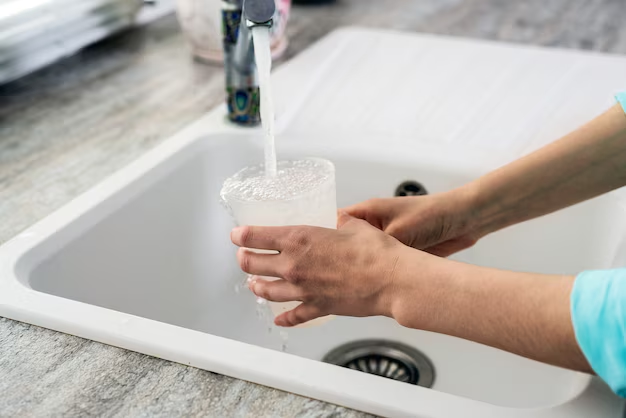Do Refrigerator Water Filters Actually Remove Fluoride? Understanding Effectiveness and Installation
When it comes to the quality of your drinking water, ensuring it’s free from unwanted chemicals and impurities is essential for many households. One compound that often raises eyebrows is fluoride. Concerns over fluoride in tap water have led many to look towards water filtration options. But can refrigerator water filters meet these expectations, especially in terms of removing fluoride? Let's dive into this often-asked question to discover the effectiveness, science, and practical aspects of using refrigerator filters for fluoride removal.
💧 The Fluoride Factor: Why the Concern?
Understanding Fluoride
Fluoride is a naturally occurring mineral that is often added to municipal water supplies for the purpose of promoting dental health. While it’s been credited with reducing dental decay, the forced inclusion of fluoride in water has sparked debates. Some people prefer to minimize fluoride intake due to potential health concerns, driving a need for water filtration solutions that can remove it.
Why Filter Out Fluoride?
While many health organizations support fluoride in public water supplies, there’s a segment of the population that prefers non-fluoridated water due to health or personal reasons. Whether it's for a perceived risk of bone or dental issues or simply a preference for chemical-free water, the desire to remove fluoride has cemented its place in the water filtration industry.
📦 Refrigerator Water Filters: An Overview
Purpose and Functionality
Refrigerator water filters are designed to provide clean, chilled water at your convenience. Typically, they are meant to improve taste and eliminate common contaminants like chlorine, lead, and other impurities. Their compact design allows easy integration into your fridge for effortless access to filtered water.
Specifics of Fluoride Removal
Many refrigerator filters excel in removing various impurities but do not effectively remove fluoride. This is because the technology required to remove fluoride — such as reverse osmosis or activated alumina — tends to be more complex and may not fit within the standard refrigerator filter setup.
🚿 Alternatives and Additional Solutions
Reverse Osmosis Systems
For those seeking effective fluoride removal, a reverse osmosis (RO) system is a highly recommended alternative. RO systems utilize a semi-permeable membrane to remove a wide range of contaminants, including fluoride, by pushing the water through at high pressure. These systems are often separate from refrigerator filters but can be installed under your sink to serve the entire household.
Activated Alumina Filters
Another alternative for fluoride reduction is activated alumina filters. These systems are designed specifically to absorb fluoride and can be set up as stand-alone units or in conjunction with other filtration systems for enhanced water treatment.
Combined Filtration Approaches
For optimal filtration, a multi-step approach can be effective. Using a refrigerator filter for basic contaminants and taste improvement, paired with an under-sink RO system for fluoride reduction, can address various filtration needs comprehensively.
🔧 Installation & Setup Considerations
Installing a Refrigerator Filter
Most refrigerator filters are straightforward to install. They simply fit into designated compartments within the fridge, and most models come with user-friendly guides to assist with the installation.
- Locate the Filter Compartment: Usually found inside the refrigerator or at the base.
- Remove Old Filter: Twist and release the old filter, ensuring the water supply is turned off.
- Install the New Filter: Insert and secure the new filter by twisting it into place.
- Flush the Filter: Run a few gallons of water through the new filter to remove any carbon residue.
Adding an RO System
When adding reverse osmosis, professional installation might be necessary due to the complexity of the system. These systems require connection to the water supply line and include multiple stages of filtration.
Maintenance Tips
Regular maintenance is crucial for both refrigerator and advanced filtration systems:
- Replace Filters Regularly: Change refrigerator and RO filters as per the manufacturer's guidelines to maintain performance.
- Monitor Water Quality: Use test kits to regularly check water quality and detect any potential issues early.
- Inspect System Components: Look out for leaks or wear, especially with RO systems.
📌 Practical Summary: What You Need to Know
Here's a quick rundown of key points and practical tips to keep in mind:
- ❌ Most refrigerator filters do not remove fluoride effectively.
- 💡 For fluoride removal, consider alternative methods like reverse osmosis or activated alumina filters.
- 🛠️ Maintenance is key: Replace and monitor all filters as recommended to ensure optimal performance.
- 🧰 Combine systems: Use a mix of refrigerator filters and advanced purification systems for comprehensive water treatment.
- 🔍 Regularly test your water quality to stay aware of what's in your water.
🧐 Making an Informed Choice
Ultimately, the decision to use a refrigerator filter versus other filtration methods depends on your unique needs and circumstances. While refrigerator filters provide easy access to cleaner water directly from your fridge, they may not address all specific filtration needs such as fluoride removal.
For comprehensive water purification, exploring options that align with your concerns about specific contaminants and following best installation practices can empower you to make the best decision for your household's water needs. Whether you opt for a reverse osmosis system, stick with a simple fridge filter, or blend multiple systems, ensuring a supply of safe, clean water begins with understanding and addressing the strengths and limitations of your chosen filtration solution.
